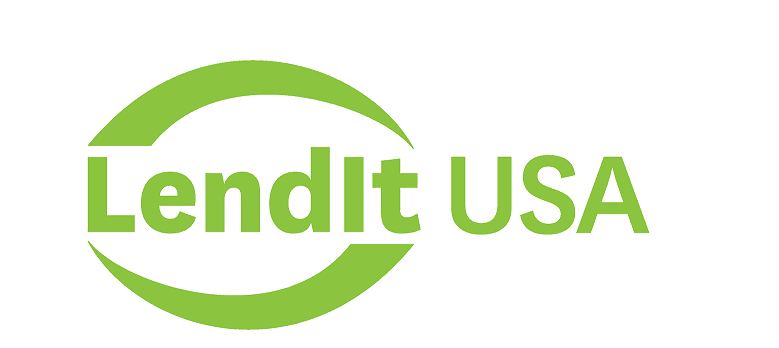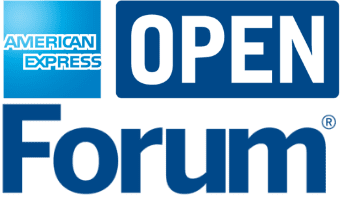ACCOUNTS
RECEIVABLE
FACTORING
Accounts Receivable funding as low as 1% per month
Kickfurther funds up to 100% of your inventory costs at flexible payment terms so you don’t pay until you sell. Fund your order(s) on Kickfurther each time you need more inventory so you can put your existing capital to work growing your business without adding debt or giving up equity.
- Often 30% lower cost than alternate lenders & factors
- Quickly fund $5,000,000+ in inventory
- Create a custom payment schedule (1-10 months)
- Fund inventory with no payments until revenue lands
Frequently asked Accounts Receivable Financing Questions
What is accounts receivable factoring?
Accounts receivable factoring is a type of financing that allows businesses to receive funding based on their outstanding customer invoices. This can be a helpful way for businesses to improve their cash flow and manage their finances, as it provides them with a source of funding that is not dependent on taking out loans or selling equity.
When businesses factor their receivables, they sell their invoices to a third party at a discount. The third party then collects the payment from the customer, and the business receives the remaining balance of the invoice, minus the discount.
Businesses that need to cover expenses or take advantage of opportunities quickly can benefit from accounts receivable factoring. Whether the business wants to reinvest or simply accelerate cashflow into their accounts, accounts receivable factoring is a tool that can help them. Of course, there are plenty of other ways accounts receivable factoring can be used so you’ll want to keep reading to learn more.
How does accounts receivable factoring work?
Accounts receivable factoring is a type of financing that allows businesses to sell their unpaid invoices to a third party at a discount. This provides the business with an immediate infusion of cash, which can be used wherever the business would like to reinvest, or simply to accelerate cashflow into their accounts versus waiting on payment terms from the retailer that owes on the invoice.
The factoring company later collects payment from the customer, minus a fee. Accounts receivable factoring is a popular option for businesses that have difficulty qualifying for traditional loans. It is also relatively easy to obtain, as long as the business has customers with good credit.
However, it is important to note that accounts receivable factoring can be expensive, and it can put a strain on relationships with customers. As such, it should only be used as a last resort.
Common Use of Factoring Receivables
Factoring receivables is a common and important financial tool used by businesses of all sizes.
This arrangement gives the business an immediate infusion of cash, which can be used for day-to-day operations or other purposes. Factoring receivables is especially helpful for businesses that have large, outstanding invoices and need quick access to cash.
It’s also a good option for businesses that are growing quickly and need to invest in additional inventory or equipment. While there are some costs associated with factoring receivables, it can be a very helpful financial tool for businesses of all sizes.
Pros and cons of accounts receivable factoring
When it comes to running a business, there are a lot of important decisions to make. One of those decisions is whether or not to use accounts receivable factoring. Here are the pros and cons of accounts receivable factoring so you can make the right decision for your business.
PROS
Accounts receivable factoring is advantageous in that it allows businesses to sell their unpaid invoices to a third party at a discount. This can be a helpful way to free up working capital, as businesses can receive payment for their invoices immediately, rather than waiting for customers to pay.
CONS
There are also some potential drawbacks to accounts receivable factoring. For one, it can be expensive, as businesses will have to pay the difference between the face value of the invoice and the amount that they receive from the factoring company. Not only that, but it can be difficult to find a reputable and reliable factoring company, and businesses may end up with high-interest rates if they are not careful.
How much does accounts receivable factoring cost?
Generally, businesses will pay a fee of around 1-5% of the invoice value, plus any additional costs associated with setting up the deal. The exact cost will depend on the size and terms of the transaction, as well as the specific factor being used.
With this in mind, it’s important to compare rates and fees before choosing a factoring company. By taking the time to understand the costs involved, businesses can ensure that they are getting the best possible deal.
Example of accounts receivable factoring
When a business sells products or services on credit, it essentially gives the customer a loan. The customer then has a certain amount of time to pay back the debt, which is known as accounts receivable (AR). Many businesses choose to factor their accounts receivable, which means selling the debt to a third-party at a discount.
For example, if a company has an AR balance of $10,000 and decides to factor the debt at a rate of 80%, it will receive $8,000 from the factoring company. In exchange, the factoring company will assume responsibility for collecting the debt. This can be beneficial for businesses that need immediate cash but may not have the resources to chase down delinquent customers.
However, it is important to note that factoring comes with costs, such as fees and interest, so it is not always the best option for every business. Ultimately, each company must weigh the pros and cons of accounts receivable factoring in order to decide if it is right for them.
What is required to qualify for Accounts Receivable Factoring?
In order to qualify for accounts receivable factoring, businesses must have invoices that are due from creditworthy customers. The factoring company will then advance a percentage of the invoice value to the business, minus a fee. You may have to show a certain level of income or profit each year, or a certain amount of sales.
Once the customer pays the invoice, the factoring company will remit the remaining balance, minus its fee. Accounts receivable factoring can be a useful tool for businesses that need to raise capital quickly, but it is important to compare fees and terms before entering into a contract
Is there a difference between accounts receivable factoring and accounts receivable financing?
Accounts receivable financing and accounts receivable factoring are both methods of short-term funding that allow businesses to access cash that is tied up in outstanding invoices. However, there are some key differences between the two.
Accounts receivable financing is a type of loan that is typically provided by a bank or other financial institution. The business borrows a set amount of money and repays it, plus interest, over a fixed period of time. In contrast, accounts receivable factoring is a type of transaction in which the business sells its invoices to a third-party company at a discount. The company then collects the payment from the customer on the business’s behalf. Because it is not a loan, there is no debt associated with accounts receivable factoring. However, it can be more expensive than accounts receivable financing in the long run.
Is accounts receivable factoring right for your business?
Accounts receivable factoring can be an attractive option for businesses that are struggling to manage their cash flow or that need to free up working capital.
However, it is important to note that AR factoring comes with some risks, including the potential for high fees and the loss of control over accounts receivable. As such, businesses should weigh the risks and benefits carefully before deciding if AR factoring is right for them.
How Kickfurther can help
Kickfurther funds up to 100% of your inventory costs on flexible payment terms that you customize and control. With Kickfurther, you can fund your entire order(s) each time you need more inventory and put your existing capital to work growing your business without adding debt or giving up equity.
Why Kickfurther?
No immediate repayments: You don’t pay back until your new inventory order begins selling. You set your repayment schedule based on what works best for your cash flow.
Non-dilutive: Kickfurther doesn’t take equity in exchange for funding.
Not a debt: Kickfurther is not a loan, so it does not put debt on your books. Debt financing options can sometimes further constrain your working capital and access to capital, or even lower your business’s valuation if you are looking at venture capital or a sale.
Quick access: You need capital when your supplier payments are due. Kickfurther can fund your entire order(s) each time you need more inventory.
Kickfurther puts you in control of your business while delivering the costliest asset for most CPG brands. And by funding your largest expense (inventory), you can free up existing capital to grow your business wherever you need it – product development, advertising, adding headcount, etc.
Interested in getting funded on Kickfurther? Create a free business account, complete the online application, review deals, and get funded in as little as minutes!
Where you've seen us


- Create Your online account Create a business account, upload your business information, and launch your deal
- Get funded within minutes to hours Once approved, our community funds most deals within a day, often within minutes to hours, so you’ll never miss another growth opportunity.
- Control your payment schedule We pay your manufacturer to produce inventory. Make the introduction and you’re off and running! Outline your expected sales periods for customized payment terms. At the end of each sales period, submit sales reports and pay consignment profit to backers for each item sold.
- Complete and repeate Complete your payment schedule and you’re done! Often once the community knows you, you’re likely to get lower rates on your next raise.
See Who Else We’ve Helped
Frequently asked questions
Not seeing your questions here? Please feel free to reach out!
How does inventory financing with Kickfurther work?
Brands access funding for new inventory (or can get reimbursed for recently produced goods) from marketplace participants. The marketplace allows brands to access private funding at costs that improve can improve with each use. Your funding goes directly to your manufacturer for production of goods and you makes no payments until you receive and begin selling new inventory
How can I create a new Kickfurther co-op?
- Launching a project involves 3 key steps:
○ Create a basic profile including information about your business and product line. Once you’ve done this you can go live with an “upcoming Co-Op” profile that users can choose to follow to hear when your Co-Op launches.
○ Determine your Co-Op structure using the Kickfurther calculator to determine costs, earnings, and timeline.
○ Verify your Credibility Metrics with the Kickfurther team and finalize your Co-Op profile.
How fast will I get funded?
Once approved and the deal goes live, most deals fund within a day (often within minutes to hours), so you’ll never miss another growth opportunity
Does Kickfurther fund all deals?
Your business must be compliant with State and Federal regulations and have an established track record of sales. Kickfurther is for inventory financing so you must have a physical product. Finally, all businesses are subject to approval by the Kickfurther quality team

